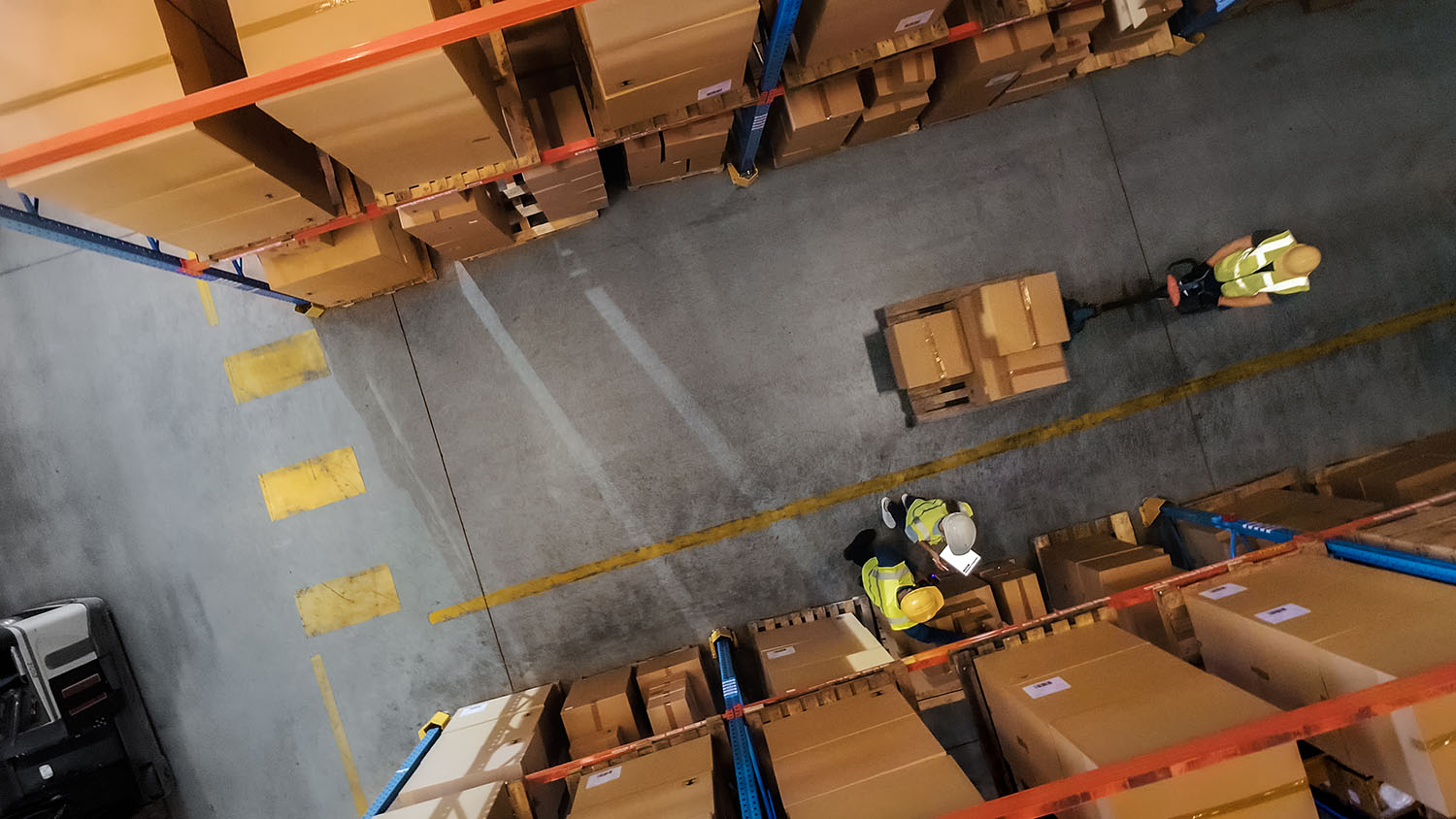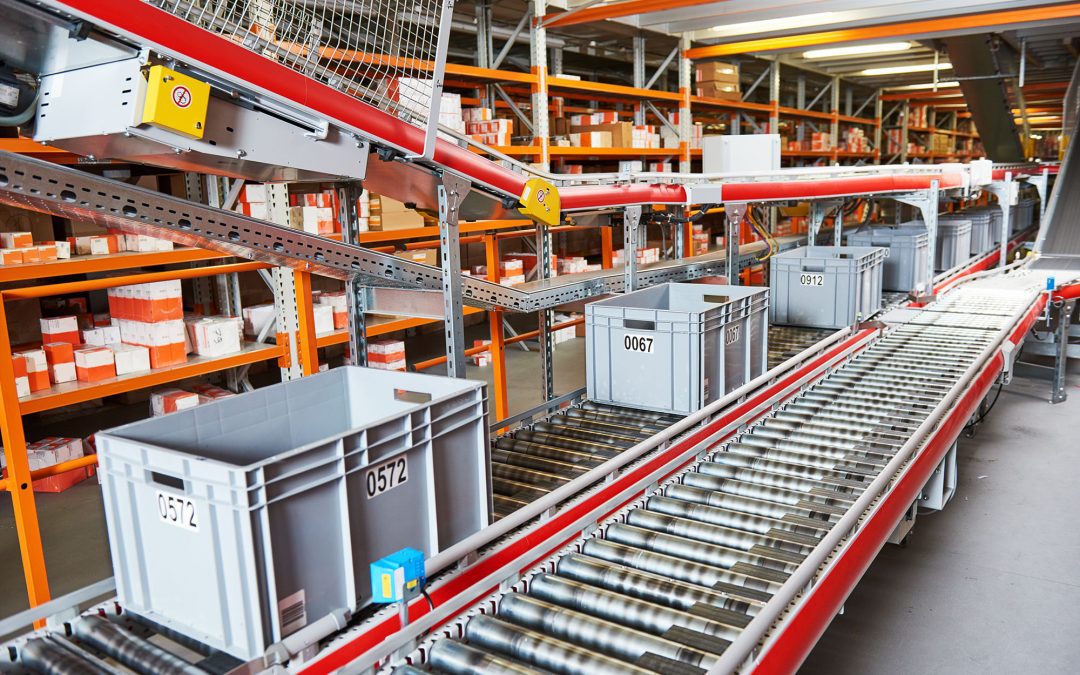3PLs handling omnichannel fulfillment need to manage warehousing, inventory, billing, and service levels accurately. But doing this manually leads to order delays, overstock, space waste, and revenue loss.
Third-party logistics (3PL) software is built to automate order processing, optimize warehouse space, increase profit, and meet tight delivery timelines. It gives you the right tools with real-time visibility to meet your client’s demands.
In this article, we’ll break down the key components of 3PL software. We’ll focus on warehouse management systems (WMS) and how they help you make informed choices to improve order fulfillment and warehouse operations.
What is a 3PL Software?
3PL software is a digital platform that helps 3PL providers manage complex warehouse and fulfillment operations for multiple clients. It helps you track and manage how you store, pack, ship, and bill on behalf of other businesses.
For example, if your warehouse has ten e-commerce clients, a 3PL software would let you manage separate inventory for each client. It automates order fulfillment based on shipping rules, generates invoices, and gives your clients real-time visibility into their inventory.
The 7 Core Functions of 3PL Software
Here are the core functions of 3PL software:
- Warehouse management: Allows real-time inventory tracking, receiving, putaway, picking, and shipping.
- Inventory management: Offers real-time tracking of inventory levels, automated stock replenishment, and comprehensive reporting tools.
- Omnichannel order fulfillment: As consumers shop across multiple channels, 3PL software must handle orders from B2B, B2C, marketplaces, and direct-to-consumer platforms through a single system. This includes order routing rules, channel-specific labeling requirements, and integrated returns processing across all sales channels
- Billing & invoicing: Automates client-specific billing based on storage duration, handling fees, and order volume.
- Client portals: Provide customers with secure access to view inventory, order status, and billing information.
- Reporting & analytics: Delivers insights on essential warehouse KPIs like pick accuracy, fulfillment speed, and labor productivity.
- System integrations: Connects with e-commerce platforms like Shopify or Amazon, ERPs, and carrier systems.
Prevalence and Impact
Many 3PLs use 3PL software to manage inventory, speed up fulfillment, and improve order accuracy. When implemented right, 3PL software can help you increase profit margin by optimizing space, forecasting demand, and improving inventory visibility.
This leads to faster order processing, fewer picking errors, and better customer service..
Why a WMS Is the Backbone of Better 3PL Operations
Unlike other industries, 3PLs need to adapt to a wide range of clients, SKUs (stock-keeping units), and service-level agreements. Each client also has different packaging rules, shipping carriers, and billing structures.
A 3PL WMS software allows you to manage that diversity by:
- Tracking the full transaction lifecycle: From receiving to packing, you know exactly when each task started, who performed it, and when it was completed.
- Supporting real-time client visibility: Your customers can track their inventory, order status, and billing.
- Improving labor productivity: Monitor movement patterns and tasks to optimize storage space, reduce walk time, and allocate staff accurately.
Choosing a 3PL WMS Software: What to Consider
Selecting the right 3PL WMS software depends on your warehousing needs and order volume.
Here are some key factors you should consider:
Scalability
A 3PL software should accommodate diverse inventory, high order volume, complex operations, and additional users without disrupting your operations. Scalable WMS software offers long-term usability and cost-effectiveness, so you don’t have to replace or upgrade as you grow.
Da Vinci’s WMS solutions adapt to your growing 3PL operations across different locations. The software consolidates your data and makes it accessible to your labor, team members, and clients. It can handle more users, orders, and data without slowing down or requiring new hardware.
User Interface
A simple, intuitive interface makes it easier for managers, workers, and team members to access data without additional training. This reduces errors, speeds up onboarding, and helps your team focus on getting orders out faster.
Da Vinci’s 3PL WMS software offers a user-friendly interface so your teams can onboard faster. It also provides a personalized dashboard that displays real-time data like picking progress, delayed shipments, and labor activity, so you can monitor operations easily.
Integration Capabilities
Integration with existing and future systems is important for smooth operations. Your 3PL software should integrate with your current ERP, CRM, and other logistics software for complete and accurate data across your full operation.
Da Vinci offers integrations with popular shopping platforms such as Amazon and Shopify. You can also use its open REST API and EDI integrations to tailor the software for your custom needs.
Support Services
Reliable support services are vital to any software solution. Look for 3PL software that offers comprehensive support, including implementation assistance, training programs, and ongoing technical support.
Da Vinci Unified offers 24/7 customer support and training guides to help you onboard and resolve issues faster.
Inventory Management
According to a survey, 54% of 3PLs adopt WMS for inventory visibility. A 3PL software should include strong inventory management features to avoid inaccurate stock levels, delayed shipments, and lost sales.
Da Vinci’s WMS offers inventory management with real-time visibility. This helps you adopt inventory management strategies like cycle counting, demand forecasting, and item classification.
You can also manage returns, place items closer to picking paths, and automate replenishment based on demand. This level of control helps reduce carrying costs and improves operational agility.
Customization Options
Every logistics operation has unique needs and challenges. That’s why the ability to customize the software to fit specific requirements is highly beneficial.
Da Vinci’s advanced WMS features are highly configurable to fit changing needs and set up workflows, documents, billing structures, and customer profiles without needing custom code or ongoing support.
Profit Margin Opportunities
3PLs often struggle to track and charge for all the services they provide. A 3PL software helps you set custom billing rules based on SLA (Service Level Agreement) for each client. It captures every billable activity with real-time performance data. This helps you design better pricing structures to increase profit margin
Da Vinci’s cloud-based WMS automates 3PL billing for different clients. It handles custom rules and charges automatically, so every transaction is accurate and fast.
Challenges of 3PL Software (And How to Overcome Them)
Here are some challenges managers face when using 3PL software:
Resistance to Change
Employees may be resistant to adopting new technologies, especially if they are accustomed to existing processes. This resistance can hinder the implementation process and reduce the software’s effectiveness.
How to overcome this:
- Communicate how the new 3PL software improves daily tasks and supports business goals
- Involve key team members early through feedback sessions and pilot testing
- Provide role-specific training with ongoing support rather than one-off sessions.
Integration Issues
Integrating new 3PL software with existing systems can be complex and time-consuming. Incompatibilities between different software systems can lead to data silos and operational disruptions.
How to overcome this:
- Do thorough planning and testing during the integration phase
- Work closely with the software provider to identify potential integration issues
- Use cloud-based WMS like Da Vinci to integrate with your existing and future systems without disruptions.
Cost and Resource Allocation
The initial cost of purchasing and implementing 3PL software is expensive. You also need resources for training and integration. This financial burden can be a challenge for some businesses.
How to overcome this:
- Conduct a detailed cost-benefit analysis to understand your potential ROI of the new software
- Use Da Vinci’s WMS data to track warehouse KPIs and identify revenue opportunities to improve your profit margin
- Implement a labor management system (LMS) to monitor labor productivity and performance across multiple warehouse sites.
Data Migration
Migrating data from old systems to new software is time-consuming. You also need to maintain data accuracy and consistency during this transition to avoid operational issues.
How to overcome this:
- Develop a comprehensive data migration plan that outlines the steps for transferring data accurately
- Find 3PL software with quick integrations to sync data faster without IT support
- Use Da Vinci’s cloud-based WMS solutions for automated data entry and accuracy.
Training and Support
Adequate training and ongoing support are essential for successful implementation. Lack of proper training can lead to underutilization of the software and operational issues.
How to overcome this:
- Find a 3PL software with a simple interface for employees to work on
- Invest in comprehensive training programs for all users
- Provide ongoing support through help desks, user manuals, and training sessions.
By addressing these challenges proactively, you can speed up your implementation process and fully leverage the benefits of 3PL software.
Bottom Line: Get Started with a 3PL Software
Choosing the right 3PL software is important for faster order fulfillment, data accuracy, and revenue growth. As customer demands grow, many big companies rely on 3PL software for inventory control, automated warehouse processes, and meeting strict delivery timelines.
You need to carefully consider factors such as scalability, user interface, integration capabilities, support services, and customization options when selecting 3PL software.
Da Vinci’s WMS is purpose-built for 3PLs that need advanced warehouse automation, real-time visibility, and client-specific workflows. It serves industries like 3PL, ecommerce, retail, and wholesale distributors.
Contact Da Vinci to explore customizable and scalable 3PL software solutions to improve your logistics operations.



